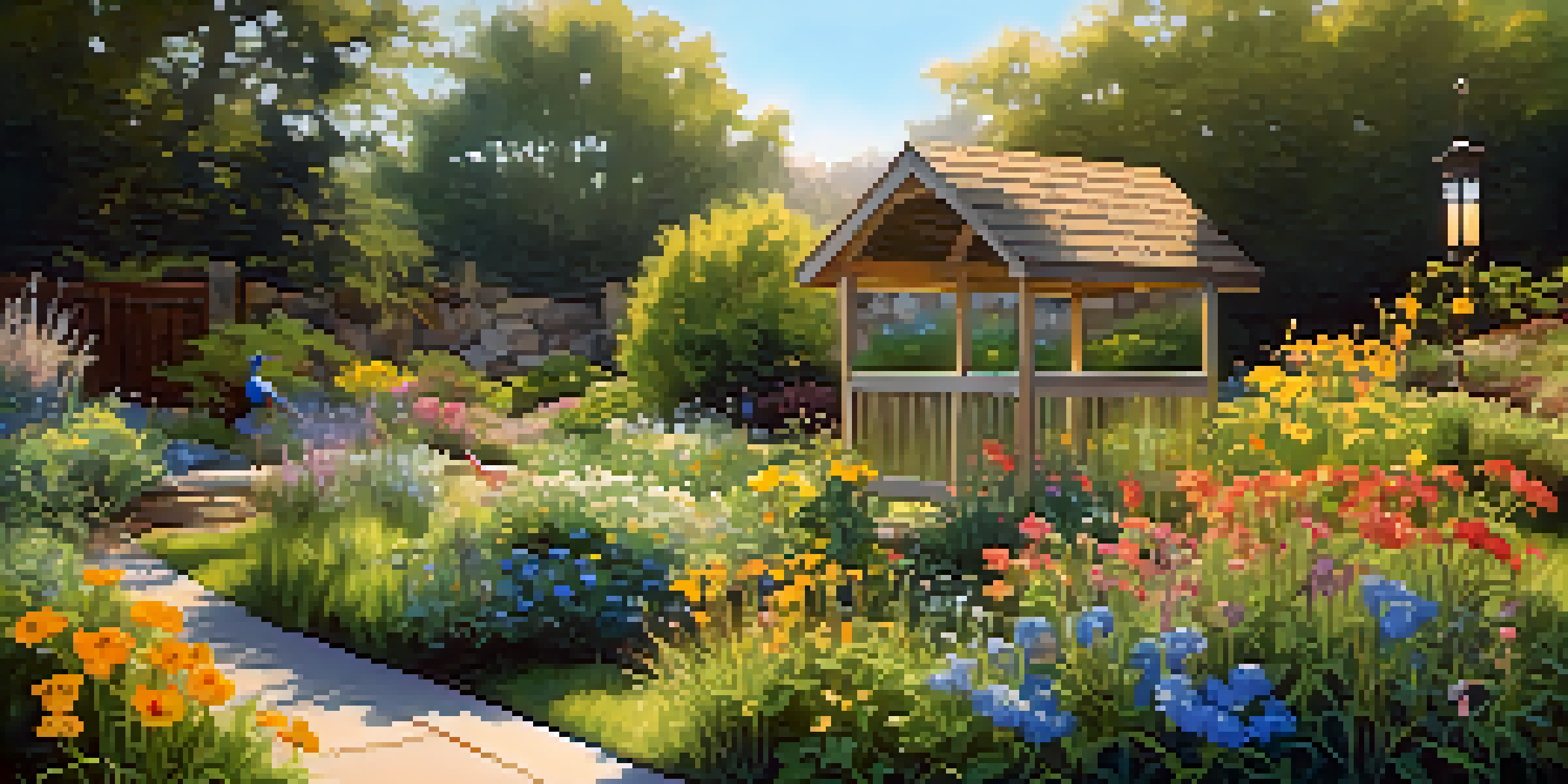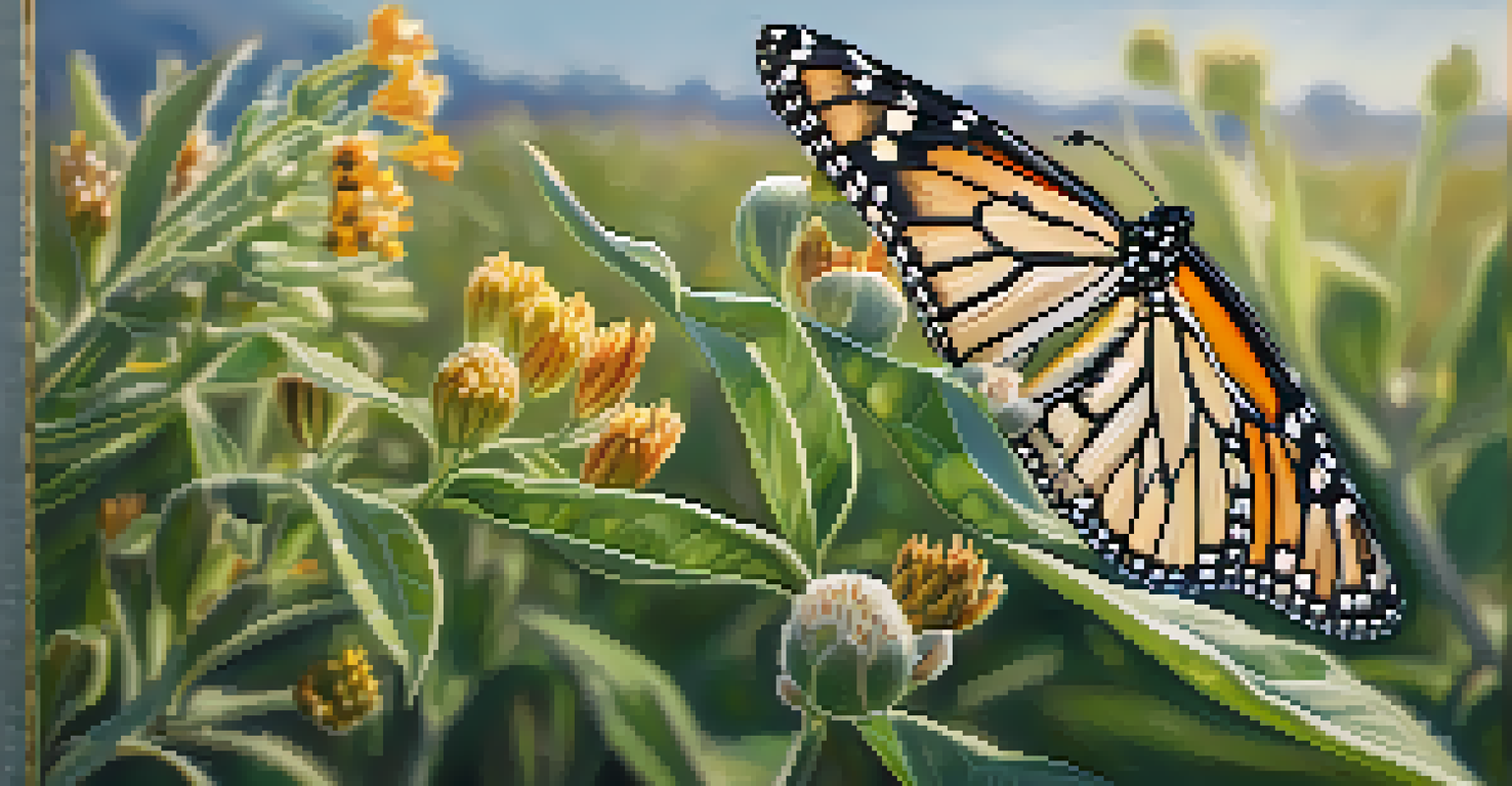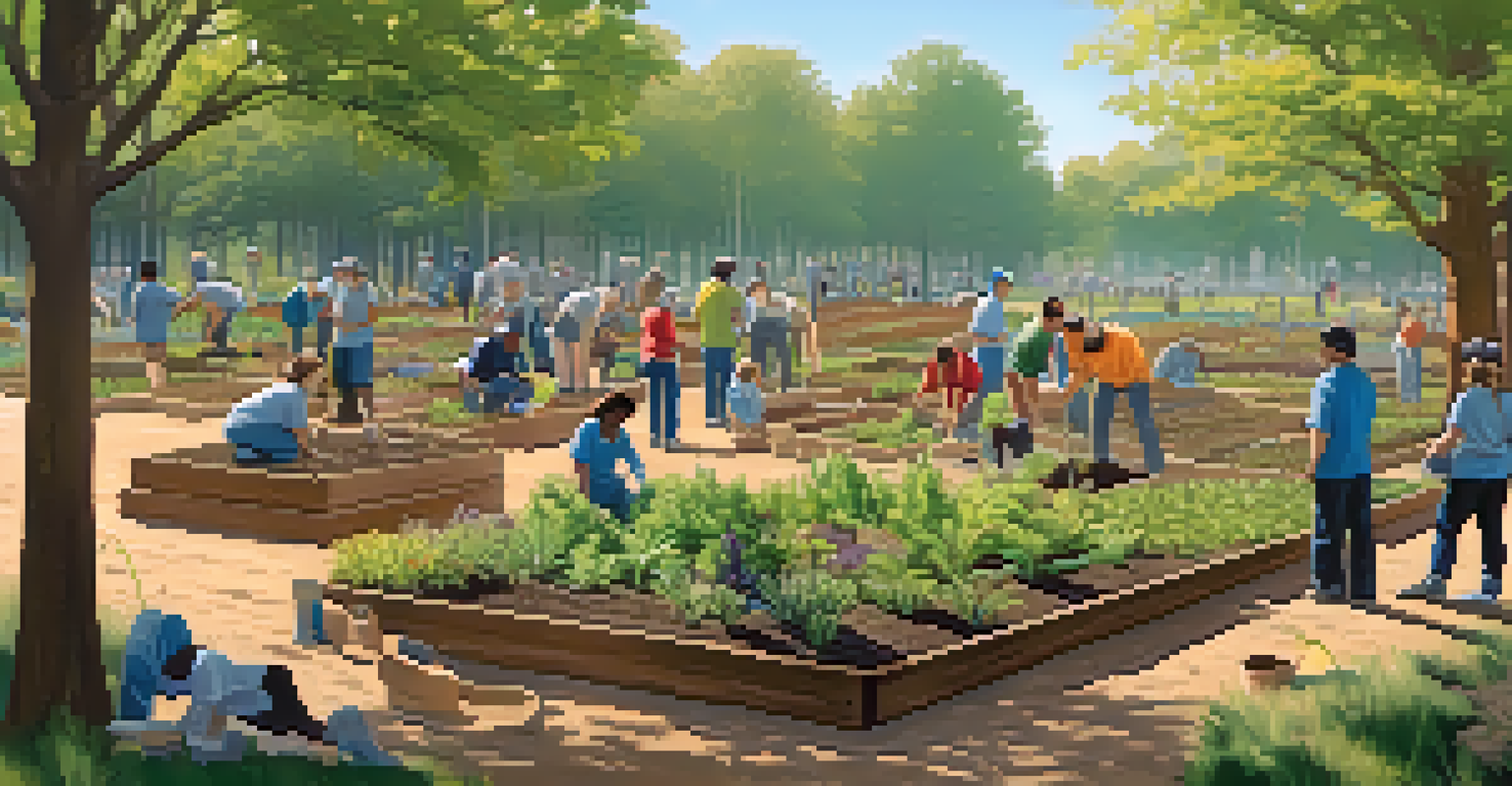The Role of Native Plants in Supporting Local Wildlife Habitats

Understanding Native Plants and Their Value
Native plants are species that naturally occur in a specific region, having evolved alongside local wildlife. These plants are well-adapted to the climate and soil conditions of their environment, making them resilient and sustainable choices for gardens and landscapes. For instance, a wildflower garden featuring local species can thrive with less water and care compared to non-native varieties.
The greatest threat to our planet is the belief that someone else will save it.
By incorporating native plants into your outdoor spaces, you create a welcoming environment for local wildlife, including pollinators, birds, and beneficial insects. Unlike exotic plants, which may require extra resources and maintenance, native plants support the existing ecosystem. They provide food, shelter, and breeding grounds essential for various species.
Moreover, native plants help maintain biodiversity, which is crucial for a balanced ecosystem. A diverse range of plants supports diverse animal species, creating a thriving habitat that benefits the entire community. By planting natives, you not only enhance your garden but also contribute to the health of your local environment.
The Relationship Between Native Plants and Pollinators
Pollinators like bees, butterflies, and hummingbirds rely heavily on native plants for their survival. These plants offer the nectar and pollen that pollinators need for nourishment, making them essential for their life cycles. For example, the milkweed plant is crucial for monarch butterflies, as it serves as both a food source and a habitat for their larvae.

When we plant native species, we create a rich source of food that attracts a variety of pollinators. This not only supports their populations but also enhances the pollination of other plants in the area. In fact, a healthy pollinator population can significantly increase the yields of fruits and vegetables in nearby gardens.
Native Plants Boost Local Wildlife
Incorporating native plants into gardens creates habitats that support local wildlife, including pollinators and birds.
In addition, native plants are often better suited to withstand diseases and pests, which means a more stable food source for pollinators. By fostering a diverse pollinator community through native planting, we contribute to the overall health of our ecosystems and ensure that these vital species continue to thrive.
How Native Plants Support Birds and Other Wildlife
Native plants are a crucial component of bird habitats, providing food, shelter, and nesting materials. Many bird species have evolved to rely on specific native plants for their diets, such as berries, seeds, and insects found on these plants. For instance, the Eastern Bluebird is known to thrive in areas with native grasses and shrubs that offer both food and nesting sites.
Nature does not hurry, yet everything is accomplished.
By creating landscapes filled with native plants, homeowners can attract a wide variety of bird species to their yards. This not only enhances the beauty of the space but also contributes to bird conservation efforts in the area. A garden brimming with native flora can become a sanctuary for local avian populations.
Moreover, native plants support other wildlife, including mammals, reptiles, and amphibians, all of which play important roles in maintaining the balance of local ecosystems. When we prioritize native planting, we create interconnected habitats that help sustain the diversity of life in our communities.
The Environmental Benefits of Native Plants
In addition to supporting wildlife, native plants offer numerous environmental benefits. They are typically more drought-resistant than non-native species, which means they require less water, making them an eco-friendly choice for landscaping. This not only conserves water but also reduces the need for chemical fertilizers and pesticides commonly used with non-natives.
Native plants also play a significant role in soil health. Their deep-root systems help prevent erosion and improve soil structure, allowing for better water retention and drainage. This is especially beneficial in areas prone to flooding or drought, as native plants can stabilize the soil and promote healthier ecosystems.
Environmental Benefits of Natives
Native plants are drought-resistant and improve soil health, contributing to overall environmental sustainability.
Furthermore, native plants contribute to air quality by absorbing carbon dioxide and releasing oxygen. They provide natural habitats that filter pollutants and improve overall environmental health. By choosing native over exotic plants, we not only beautify our surroundings but actively participate in sustainability efforts.
Creating a Native Plant Garden: Getting Started
Starting a native plant garden is a rewarding endeavor, and it begins with researching the plants native to your specific region. Local extension services, botanical gardens, and native plant societies can offer valuable resources and plant lists. Understanding the growing conditions, such as soil type and sunlight, will help you choose the right plants for your space.
Once you have selected your native plants, consider grouping them according to their needs and growth habits. This not only creates a visually appealing landscape but also allows for better care and maintenance. Incorporating a mix of flowering plants, shrubs, and grasses can attract a wider variety of wildlife, enhancing the ecological value of your garden.
Don't forget to maintain your native garden! While they require less care than non-natives, periodic weeding and mulching will help your plants thrive. Over time, you’ll notice more local wildlife visiting your garden, creating a vibrant ecosystem right at your doorstep.
Community Involvement and Native Plant Initiatives
Engaging with your community to promote native planting can amplify your impact. Many local organizations and conservation groups offer programs and workshops to educate residents on the importance of native plants. Participating in these initiatives not only enhances your knowledge but also fosters community spirit and collaboration.
Consider joining or forming a local gardening club focused on native plants. Sharing tips, resources, and even plant cuttings can create a sense of camaraderie among neighbors. You may even organize group planting days to beautify public spaces or local parks with native flora.
Community Engagement is Key
Participating in local initiatives and gardening clubs fosters community spirit while promoting the importance of native planting.
By working together, communities can create larger habitats that support wildlife, ultimately contributing to regional biodiversity. Every small effort counts, and together, we can make significant strides in restoring and preserving our local ecosystems.
The Future of Native Plants and Wildlife Conservation
As urbanization and climate change continue to threaten natural habitats, the need for native plants in our landscapes becomes increasingly critical. By prioritizing native species, we not only enhance our local environments but also contribute to broader conservation efforts. The survival of many wildlife species is intertwined with the health of their habitats, making native planting a vital action.
Organizations and researchers are working tirelessly to promote awareness about the importance of native plants and their role in wildlife conservation. Supporting these initiatives through advocacy and community involvement can help ensure that future generations will benefit from the rich biodiversity that native plants offer.

Ultimately, the future of native plants and wildlife depends on our commitment to fostering understanding and appreciation for local ecosystems. By planting native, we empower ourselves and our communities to protect the natural world, creating a legacy of sustainability and harmony with nature.